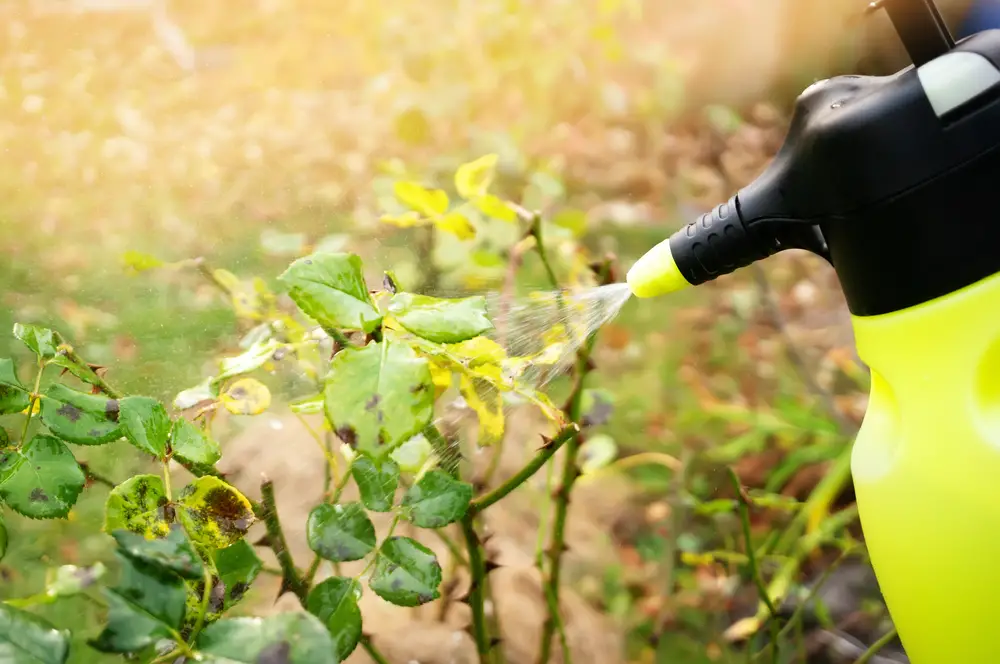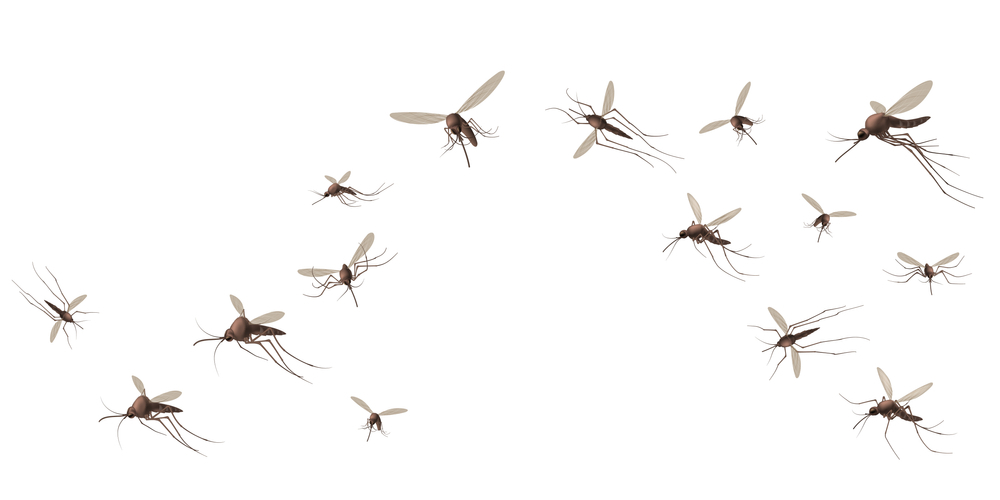Do gnats bite? This is a question that many people ask, but there is no definitive answer. Gnats are tiny flying insects that can be a nuisance but do not typically bite humans.
There are different types of gnats; some bite while others do not.
This blog post will explore the different types of gnats and discuss their habits. We will also look at ways to prevent them from biting you!
Do Gnats Bite?
While they’re more of a nuisance than anything, gnats can be pretty pesky. If you’ve ever been swarmed by them, you know how irritating they can be.
But the question remains: do they bite?
Gnats are small, winged insects attracted to your face thanks to the carbon dioxide you exhale with every breath. They typically don’t bite people, as their mouthparts aren’t designed for piercing skin.
However, some species of biting gnats, such as no-see-ums and sand flies. These pests can break through your skin, causing welts and irritation.
Female biting gnats are dangerous, as they can transmit diseases like malaria and yellow fever. It can also trigger an allergic reaction. So, if you are constantly bothered by these tiny pests, it’s best to consult a professional.
Otherwise, you may be at risk for something much worse than just an itchy bug bite.
What Are Gnats, And What Do They Look Like?
Gnats are small, fly-like insects ranging from 2 to 5 mm. They are often mistaken for fruit flies, but the two have several key differences.
For one, black flies have red eyes, while gnats have black eyes. Additionally, fruit flies are attracted to ripe fruit, while sand gnats bite on decaying matter, such as dead leaves and manure.
While they may not be welcome visitors in your home, gnats pose little threat to humans and are not known to carry any diseases. However, their presence can be a nuisance, and they are known to swarm in large numbers.
If you find yourself with a gnat infestation, there are several things you can do to get rid of them. Placing a bowl of vinegar or soapy water near where they congregate can help trap and kill them.
You can also use an insecticide spray to kill them on contact.
If you have plants in your home, pay close attention to the soil as gnats often lay their eggs there.
Keep the soil moist but not wet, as this will help prevent the eggs from hatching.
Finally, keep your garbage cans clean, and your countertops free of crumbs as these can attract gnats.
Do All Types Of Gnats Bite Humans?
There are over 1,600 species of gnats, and they can be found on every continent except Antarctica.
But do all of these tiny creatures bite humans? In short, no. While some species called buffalo gnats bite humans, others simply annoy us with their constant buzzing.
So, which gnats bite and which don’t?
The vast majority of gnats that bite humans belong to the family Ceratopogonidae.
These blood-sucking creatures are often called “biting midges” or “no-see-ums” due to their small size (usually less than 3mm). Biting midges are found worldwide, and they primarily feed on the blood meal of mammals and birds.
While most biting midges don’t carry disease, some can transmit viruses like West Nile virus and Dengue fever.
Fortunately, not all gnats bite humans. In fact, many gnats don’t bite any animals at all—they subsist entirely on plant nectar.
These non-biting gnats are typically much more significant than biting midges (up to 12mm in length) and belong to the family Mycetophilidae.
What Do Gnats Eat?

Gnats are tiny flies often found near puddles or in damp areas outdoors.
While they are not typically harmful to humans, they can be a nuisance, especially if they enter your home. But what do these little insects eat?
The diet of a gnat depends on the species. Some gnats feed on plant sap, while others prey on small insects. Some adult gnats will also drink nectar or other sugary liquids.
Larvae generally have more limited diets than adult gnats.
For example, many fungus gnats larvae only eat organic matter in humid environments like compost heaps, whereas others will eat a range of things, including plants and small insects.
Knowing what gnats can help get rid of them. For example, suppose you have a problem with adult gnats in your home. In that case, you can try placing bowls of sugar water around the affected area to lure them away.
If you have larvae in your compost heap, making sure the stack is not too wet will help eliminate their food source and eliminate the problem.
In general, keeping your environment clean and free of standing water will help discourage gnats from residence.
How Do You Prevent Gnats From Biting You?

To most people, gnats are nothing more than a nuisance. Unlike mosquitoes, their tiny size and relentless biting make them a common source of irritation, particularly during summer.
However, a gnat bite can actually pose a serious health risk, as they are known to transmit diseases such as malaria and can trigger allergic reactions.
Fortunately, you can take a few simple steps to prevent gnats from biting you.
First, avoid spending time in areas where gnats are known to congregate. This includes stagnant pools of water, areas of high grass, and organic matter such as compost piles.
If you must enter these areas, consider wearing long sleeves and pants to help keep gnats away from your skin.
Additionally, you can treat gnat bites by applying a small amount of gnat repellent scent or anti-itch creams to exposed skin.
Finally, keep your home and yard free of potential breeding sites for gnats by draining any standing water and regularly cleaning up organic debris.
Taking these precautions can significantly reduce your chances of being bitten by a gnat.
Where Do Gnats Live?
Gnats are small, fly-like insects that are often found near sources of moisture. While they are not known to carry diseases, they can be a nuisance due to their constant buzzing and biting.
Gnats typically lay their eggs in damp soil or decaying organic matter, such as rotting leaves or fruit. The larvae hatch from the eggs and live in a moist environment until they mature into adults.
Once they reach adulthood, gnats will often congregate in large numbers near lights or windows.
While they do not have a long lifespan, gnats can reproduce quickly, which is why infestations can be difficult to control.
To prevent gnats from taking over your home, keeping indoors clean and free of potential breeding grounds is essential.
Read More: Where Do Ladybugs Live In Your House?
What Diseases Do Gnats Spread?
Although small, gnats can pose a significant threat to human health. These flying insects are known to spread various diseases, including malaria, the West Nile virus, and dengue fever.
In fact, the World Health bbOrganization estimates that gnats are responsible for transmitting diseases to more than 700 million people each year. While most of these cases occur in developing countries, gnats can be found worldwide, making everyone vulnerable to gnat bites.
Symptoms of these diseases can range from mild fever and headache to severe hemorrhaging and death.
Therefore, it is essential to take precautions against these tiny pests by using insect repellent.
Besides, always wear long-sleeved shirts when outdoors.
Gnats may be tiny, but they pack a powerful punch when spreading disease.
Conclusion
Gnats are small, fly-like insects that can be a nuisance due to their constant buzzing and biting. They typically lay their eggs in moist soil or decaying organic matter, and the larvae hatch into adults living in the humid environment until they reach maturity.
Prevention is vital when avoiding these tiny pests- keep indoors clean and free of potential breeding grounds, use insect repellent when outdoors, and wear long-sleeved clothing.
Have you ever been bitten by a gnat? What was it like? Share your story in the comments below!
Keep Reading:
Where Do Dragonflies Go When It Rains?
Driven by a passion for those tiny creatures that rule our world, we at Bug Domain strive to be your go-to resource for information on insects.



